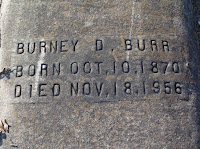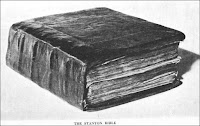Beaufort NC's African-American History and Architecture
by Peter B. Sandbeck and Mary Warshaw
BEAUFORT & MOREHEAD CITY VENDORS
Reviews
Sharon Harker – Mayor of Beaufort
"A
source of impeccably researched facts and illustrations about a
fascinating but heretofore missing chapter of North Carolina coastal
history. Mary Warshaw paints an impressively comprehensive panorama of
the consequential contributions and traditions of Beaufort's
African-American community. This groundbreaking book, which supplements
original research by historic preservation consultant Peter Sandbeck's
1995 report for the Beaufort Historical Preservation Commission, adds
immeasurably to our knowledge and vision of our past. An immensely
enriching, rewarding, priceless piece of scholarship and one that will
inform future generations for ages to come!"
Excerpt from Sandbeck's Introduction
Woodcutter "Lorse" Anderson - Duke University Archives
African Americans in Beaufort - An Overview
The history of African Americans in Beaufort goes back to the 18th century, yet remarkably little research or study has ever been carried out on the subject. Prior to 1800, when the town's black population consisted entirely of slaves, the records are virtually silent on their lives and the crucial roles that they must have played in the development and very construction of the town and its society. The labor performed by these slaves, from clearing land to building houses to working as domestics and servants in white households, made possible the very existence of the town during the difficult settlement period of the 18th century. Beaufort's slaves, like most, left no written history; as a result they are anonymous and will likely remain so.
With the growth of the free-black population during the early decades of the 19th century, the fascinating story of African Americans, and their contribution, begins to unfold. Beaufort's black population, which stood at 122—all slaves—in 1800 when the entire town numbered only 559, grew to include 59 free blacks and 579 slaves in 1860, in a town of 1,610. The federal census records for 1850 and 1860 list the occupations of free blacks for the first time, revealing a wide range of skills and trades including house-carpenter, shoemaker, fisherman, farmer, and even four musicians. Five free blacks in Beaufort had achieved the status of property owner by 1860. The great majority were still enslaved, all working daily to build and develop the town which was then in the midst of an antebellum heyday as a fashionable summer resort. MORE . . .
Stanton Family Bible included Births of Family Slaves
Son, Benjamin Stanton, born in 1746, was first to record information in the family Bible, printed in England in 1712. Benjamin had inherited slaves from his father, but these he had emancipated about the year 1787 when members of the Society of Friends in North Carolina. Benjamin Stanton, and his widow and children, succeeded in protecting the slaves set free by him and some of them emigrated to Ohio with the family in 1800.
Excerpt from 1870 Census
The end of the Civil War brought with it the doubling of Beaufort's black population from 638 in 1860 to 1,242 in 1870, about half of the total population. Growth was fueled by the influx of Freedmen from the surrounding county.
Heads of households have been arranged in alphabetical order. When more research revealed other family records, that information was added. Unless noted, marriages occurred in Carteret County.
▪ AMBROSE, DAVID 36, with Minerva 35, Charity 12, and 1-year-old Ella.
Born about 1834, slave David Ambrose married slave Minerva Hasket in 1855; retroactively recorded August 7, 1866.
▪ ANDERSON, GEORGE (farm laborer) 35, Harriet 28.
By 1880, George was a widower with Elias 15, Lavenia 12, Isabella 9, Jacob 6, and 3-year-old son Castilla Anderson. By 1900, 65-year-old George was with new wife Mary E. 40, and children Alice, Jake, Castillie, James, John, Rosa, Lucy, and Lulu Anderson, with 1-year-old grandson Albert Quinn. . . .
Excerpt from "Menhaden Chanteymen"
Beaufort's Black Citizens - Research Highlights (1 of 20 pages)
 ▪ BOYD, MARY LOUISE TILLERY (1920‒2016), daughter John Randolph Tillery and Parmilla G. Gaskill, graduated from Queen Street High School. She then attended Bennett College, NC A&T University, East Carolina University, and Winston-Salem State. In 1944 she married Anthony Manuel "Toby" Boyd.
▪ BOYD, MARY LOUISE TILLERY (1920‒2016), daughter John Randolph Tillery and Parmilla G. Gaskill, graduated from Queen Street High School. She then attended Bennett College, NC A&T University, East Carolina University, and Winston-Salem State. In 1944 she married Anthony Manuel "Toby" Boyd. Until 1989, Mary Louise was a biology technician at Marine Fisheries on Piver's Island. She then spent four years at Carteret Technical Institute. Her service included appointment to the Carteret County Mayors Committee for Persons with Disabilities, membership on the NC Marine Science Council, and membership on the Block Grant Program in Morehead City. Mary was also a trustee at Carteret Community College. As a member of St. Stephens AME Zion, she served as Director of Christian Education.
 ▪ BURR, BURNEY DAVID (1870‒1956), drayman and "handyman," was born on Queen Street to Jane and William Lambert Burr.
▪ BURR, BURNEY DAVID (1870‒1956), drayman and "handyman," was born on Queen Street to Jane and William Lambert Burr. On September 14, 1893, Burney married Sarah Yerkey Davis, daughter of Tom Forlaw and Nancy Davis; the marriage was performed by Minister Michael P. Jerkins. Burney and Sarah were parents of Margaret Henriette, William, Ethel Virginia, Jany E., and Burney David Burr Jr. (1911‒1918), who died of typhoid fever. By 1900, the family owned the home at 608 Pine Street. Burney Burr Sr. was buried in Ocean View Cemetery, with Burney Burr Jr., Margaret Burr Oden, and Ethel Burr Pickett.








